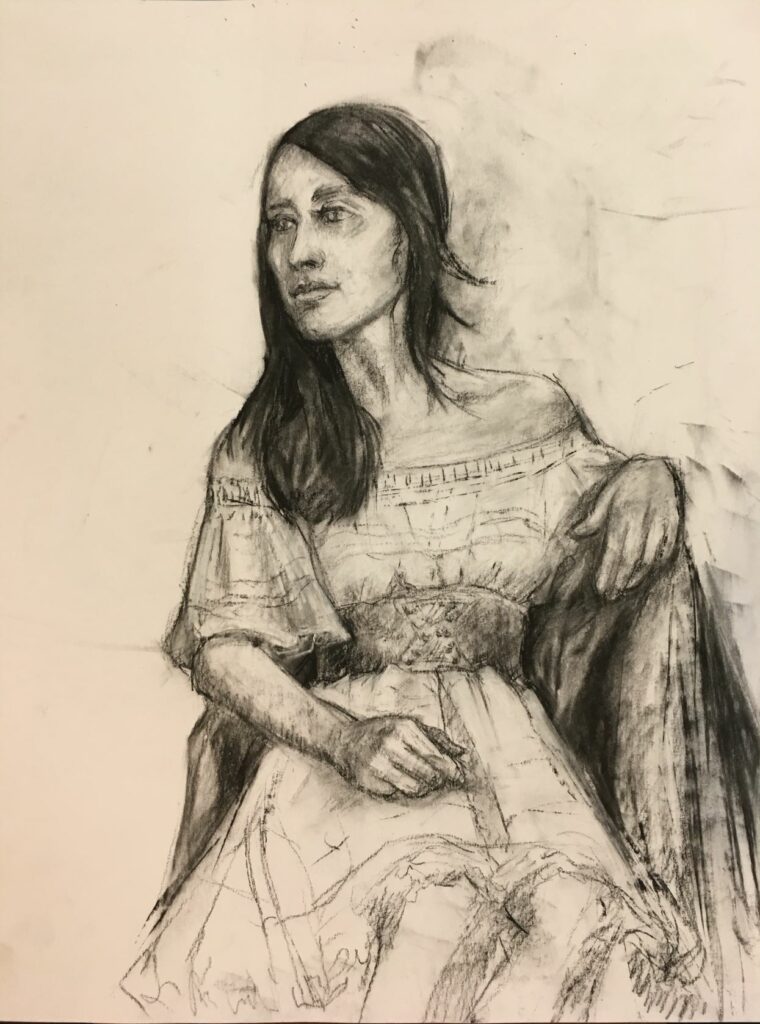From the Archives: 03/20/2018

I reached out my hand and shook hers. I asked her if she had ever modeled before. She said, “No,” but she was excited nonetheless. I explained to her how it works, that she could use the bathroom straight ahead and to the left to change into her robe. “We’ll take several short poses, maybe five minutes each, and then move into a longer twenty minute one. After a short break, we’ll do an hour. Don’t worry; we’ll give you plenty of breaks.” She grabbed her bag and headed to the bathroom while I put in a Miles Davis CD. The music slit the air, trumpets filling in the quiet spaces of the open room. We had been meeting up here each Tuesday for over a year. I posed the question to the others; there was some murmuring and discussion. One person flipped through her sketch pad to find a date on one of her earlier drawings. About a year now, yes.
It was Tuesday Night Drawing group. If it weren’t so sacrilegious to say, it was our church. We never missed a Tuesday, even during that terrible snow storm last year. I walked the mile into town to draw. There were about five or six of us who came regularly. We stood behind easels, straddled drawing horses, and sat in folding chairs with drawing boards propped up on our laps. I liked to stand. I tend to move around a lot when I work, stepping back frequently and squinting to check for values and shading.
I was the out-spoken one in the group, who always greeted the models, offered them tea, and showed them the restroom and the model stand. Sometimes we would drape the models and I arranged long swaths of white fabric over their still bodies to create a pleasing composition. I arranged the shop lights for a dramatic pose, or aimed them to the side for more subtle lighting.
Once the model had changed into her robe, I led her to the model stand and pointed the lights in her direction. Another artist was in charge of the timer. When she pushed the button, the model dropped her robe and kicked her hip to one side. She put her right hand on her shoulder, covering her breast with her tattooed forearm. Her other arm hung limp to the side. She looked around the room until her eyes settled on an architectural detail. And she was still.
It is always at this moment that our brains struggle to figure out how to tell our hands what to do. Drawing is a technical skill. One can study and learn to become proficient at it. Yet, it is very difficult to teach people to really see. My eyes darted around the figure, looking at her first as a body, like mine, exposed and still. And as my brain shifted to right side operations, I began to see light and shadow dancing across her flesh.

My hand slid across the toned paper with a short piece of conté crayon. I marked a little line for the top of her head and a line for her feet. Then I drew a vertical line, matching her sternal-notch with the inside of the ankle on the weight-bearing leg. My eyes darted from model to paper, model to paper, I scratched out a line denoting a rib cage. Back to the model, they settled on the interplay between the dark background and her lit ribs, the line moving from her shoulder down her arm with subtle dips at the insertion of the deltoids. Back to the paper, my hand hesitated, back to the model.
The experience of working with a model is difficult to explain because it is unlike any other. The part of my brain in control of language and logic, in control of symbols and preconceived notions of the world is turned down, while this other side amplifies light and shadow. It moves the hand with intuition, looking in a way that is impossible in daily living. The high that artists experience might be able to be explained by the fact that we are using a totally different part of the brain than in every day. It feels like an altered state, because it is. And it is in this state that I feel most at home in myself.
